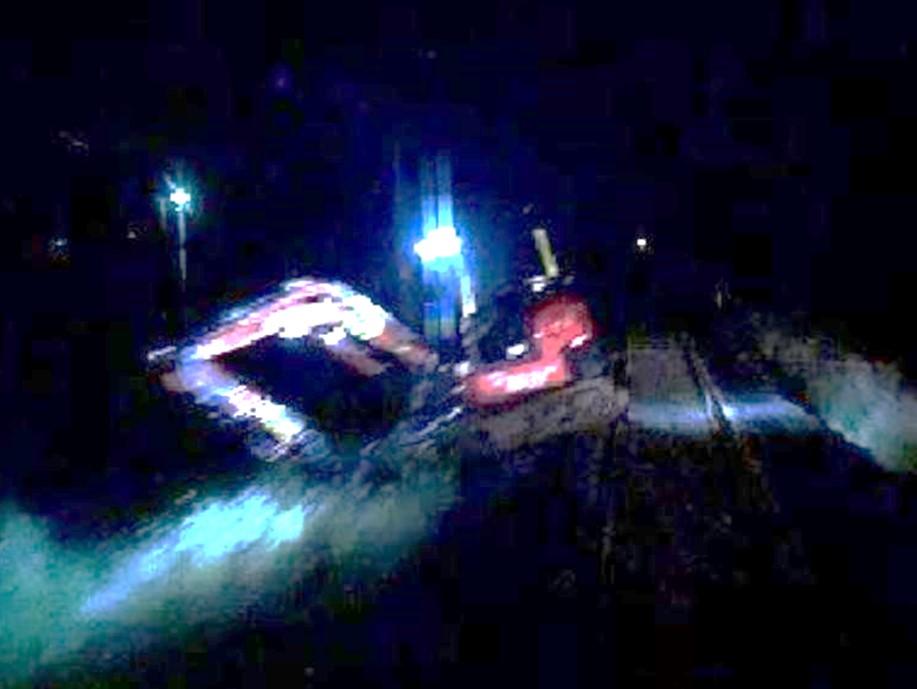
Network operator Queensland Rail has taken a number of safety actions after two passenger trains nearly collided with an excavator, which had driven onto an active section of track in Brisbane, an Australian Transport Safety Bureau final investigation report notes.
During preparations for a planned works closure of the rail line between Brisbane’s Thorneside and Birkdale stations on the evening of 7 March 2020, an excavator was driven onto a section of track that was still in operation.
As a Queensland Rail suburban passenger train approached at over 90 km/h, the train driver saw the excavator and applied the emergency brake.
The excavator operator also saw the train, and removed the machine from the tracks, with footage showing the excavator clearing the running line less than one second before the train passed at about 61 km/h.
After the train stopped, it was then approved to proceed by the network control officer (NCO), because the NCO was told the excavator was clear of the tracks, despite it still being within the 3 m danger zone.
Then, once the first train had departed with the excavator in the danger zone, the excavator operator was directed to remove the machine from the danger zone. As the operator began to do this, another suburban passenger train passed through the site.
During this second near collision, the excavator operator jumped clear down an embankment to escape danger.
The ATSB’s investigation concluded a range of factors contributed to the near collision incidents. The final report notes a number of communication processes were limited and unclear, leading some individuals to misinterpret information, and some to unintentionally communicate incorrect information.
Among the contributing factors, the ATSB found the Queensland Network Rules and Procedures did not provide sufficient guidance for rail safety workers to ensure they used standardised, rail-specific terminology when communicating safety-critical information.
Additionally, a number of issues were identified with the work group’s pre-start briefing, including the fact that the lead protection officer (PO), assistant PO and excavator operator were not involved.
“Substandard network pre-start briefings and communication irregularities have been identified as contributors to railway accidents in Australia and abroad,” ATSB Chief Commissioner Angus Mitchell said.
“Despite this being well documented, rail infrastructure managers and track workers continue to experience issues with the application of effective safety-critical communication, and assuring network pre-start briefings are conducted in accordance with procedures designed to manage safety risks.”
Mr Mitchell said it was essential all workers attend pre-start briefings, prior to entering the rail corridor, and fully understand the worksite protection that is in place.
Separately, while Queensland Rail had undertaken significant work in the years prior to the incident targeted at managing the risk of collisions between rail traffic workers and machinery, the ATSB’s investigation found the design of the first-line assurance activities, and the limited use of second-line and third-line assurance activities, meant there was only limited assurance that the worksite protection aspects of pre-start briefings were being conducted effectively.
“The rail corridor is a safety-critical work environment, and work in that corridor fundamentally relies on procedural controls to remain safe,” Mr Mitchell said.
“It is therefore vital that first-line assurance activities are appropriately designed to provide an accurate account of key work practices being assessed, and that sufficient higher level assurance activities are conducted to provide confidence in the results of the first-line assurance activities.”
“The absence of accurate information limits the ability of an organisation to learn and continuously improve safety.”
As a result of the incident, Queensland Rail issued a critical safety alert to all relevant staff, outlining a number of key actions, including that all workers must attend a pre-start briefing prior to entering the rail corridor.
Queensland Rail also entered an enforceable voluntary undertaking with the Office of the National Rail Safety Regulator, committing to 13 initiatives to improve planning processes for track access, and a range of other safety steps.
Read the report: Safeworking irregularity involving passenger train 1898, near Thorneside, Queensland, on 7 March 2020


